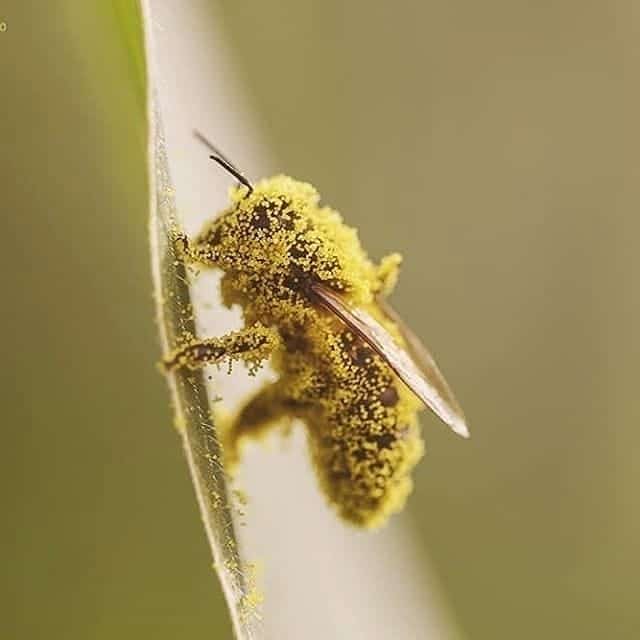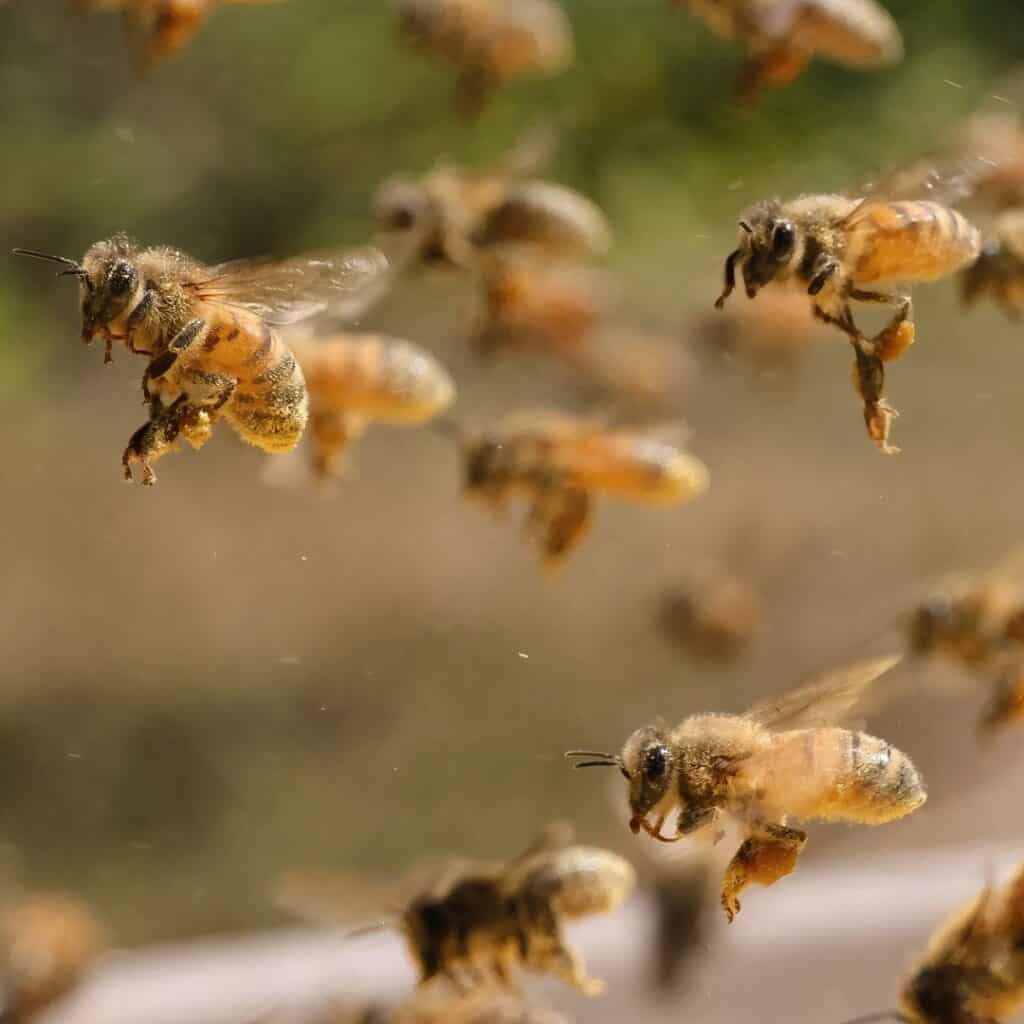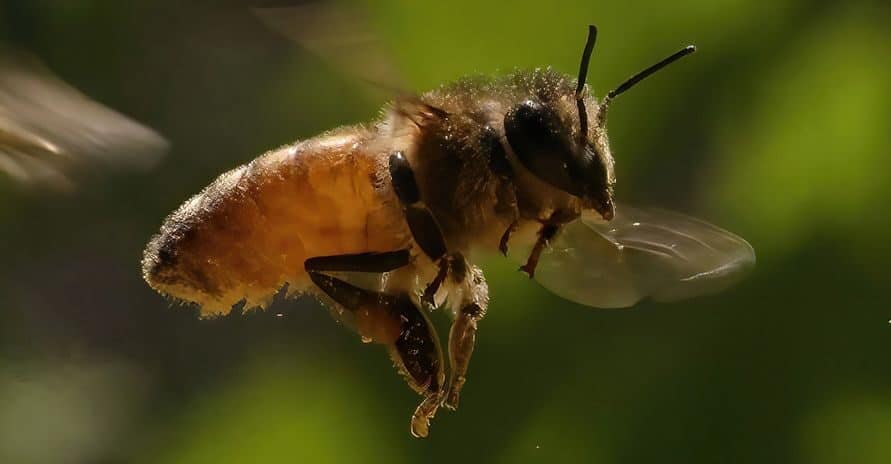Bees become flying about three weeks after emerging from the egg and fly out to collect nectar and pollen. If there is abundant demand and a shortage of flying bees, young bees become flying from the age of 6-8 days.
In a strong family of 60-70 thousand bees, more than half of the bees (about 35 thousand) take off daily for nectar or pollen during the period of the abundant main harvest of honey, making 9-10 sorties.
How high can a bee fly?
A bee takes 2 mg of sugar with it when it flies out of the hive. With this reserve, it can fly 2.85 mi in one direction (to fly 0.6 mi without load, the bee spends 0.43 mg of sugar). If the bee does not find nectar, it cannot return to the hive. Therefore, bees usually fly no farther than 1-2 mi from the apiary, and when they fly out of the hive, they stock up on honey.
A bee’s flight height is usually 32-40 feet, and 3 feet off the ground when it is windy.
The farther the bee flies, the less nectar it brings, as it feeds on it while flying to compensate for the physical cost. For 2 mi of flight, the bee itself uses up to 70% of the nectar.
Order of exit and return of bees through the hive
When bees come to take flight, they go out of the hive to the front wall of the hive and return to the air. The lower part of the perforator remains free, and nectar-laden bees returning from the flight use it to enter the hive unhindered. This is why there is no crowding at the hive.
Where to place a beehive?
Hives should be placed as far as possible in the middle of the honey area so that the bees determine the best routes for themselves. For nectar, they will fly against the wind, and with honey in – the tailwind.

The workload of flight bees
During the flight, a bee can carry a load of 3/4 of its weight, which is about 75 mg. On a rough surface, the bee can drag a load 20 times its body weight (up to 2 g).
In one flight a bee can deliver 55-70mg of nectar in a very strong nectar flight, 40-50mg in a strong nectar flight, 30-35mg in a medium nectar flight, and 15-20mg in a weak nectar flight. Female pollen collector bees can bring on average 10-15 mg of pollen, 20-35 ml of water, and 60 mg of honey at a time.
In favorable weather and good pluck, gatherers of strong families may collect 22-26 lb of nectar in one day.
How fast can a honey bee fly?
Working bees fly very fast, traveling 12 to 15 mi per hour with a full goblet. The flight speed of the unloaded bee is up to 40 mi per hour.
How far do bees travel?
The useful radius of flight of the bee behind the swell is 1.5 mi. The flight range depends on the terrain, distance to the source of food, and the presence of bushes, trees, buildings, and other objects. In the steppe, where there are no such landmarks, the bee does not fly further than 3 mi. In areas crossed by ravines and covered with shrubs, where there are landmarks for the bee, the range of its flight may reach 8 mi.
How long can a bee fly?
Honeybees are not able to live long outside the family, their death comes after a few hours of solitude. This is why the duration of the flight for nectar does not exceed 1 hour, after which the bee seeks contact with the bees of its nest. The length of time a bee stays in the hive between two flights is about 15 minutes.

What time do bees go away?
The working day of bees usually lasts from 4 a.m. to 9:30 p.m. During their life, bees make on average 80-120 sorties, and in one flying day with a good take-off make 8-10 sorties. Flight may last from 8 minutes to 2 hours.
Nectar gathering by bees at night
In some cases, bees collect nectar on moonlit nights from the flowers of those plants that steadily secrete nectar during the day. For example, raspberries secrete nectar around the clock, even in the cold summer, so you can find them picking bees on their flowers on bright nights.
How many miles can a bee fly in a day?
The honey bee makes about 8 to 12 sorties per day, each of which is 2-5 mi. Based on this data, it can be calculated that the insect travels between 25 and 55 mi during the day.
